AMD A10-7870K APU review – the first CPU from the “Refreshed Kaveri” generation is here

AMD has announced its updated variant of the A10-7850K CPU that’s practically the same, but offers a bit better graphics and computing performance. Why is that? Тhe CPU cores have received a minor bump in the base operating frequency and the same goes for the GPU cores. Thankfully, the TDP stays the same and that’s a good thing, especially considering how AMD CPUs have this energy-efficiency problem.
In other words, the architecture, design, manufacturing process and etc. stay the same and the only thing that got improved are the clock speeds as well as the heatsink which should be bigger than the previous model and FX CPUs. That being said, we can expect some better cooling properties for a quieter build and should correct boost operation of the CPU. So without further ado, we will try to introduce you the APU series CPUs as a whole and then include enough benchmark and real-life gaming tests with the A10-7870K.
Contents
Architecture
The new chip is part of the Kaveri generation CPUs, but AMD likes to refer to it as “Kaveri refreshed”, which is the logical thing to do, because we can expect the next generation sometime in 2016 and as for now we have to go along with what the Taiwanese company has to offer. Let’s begin with a brief story of the APU processors.
The first APU processors on the market emerged as “Liano”, “Richland” and “Trinity” and they were manufactured using a 32nm process. The main difference between the old generation and the new Kaveri lineup is that the Kaver chips boast a 25% better performance and due to the improved 28nm manufacturing process – less power consumption and less heat. Furthermore, the Kaveri lineup features the unique HSA (Heterogeneous System Architecture) that enables numerous energy efficient and raw power features with the most notable one – hUMA. hUMA stands for heterogeneous Unified Memory Access which enables both the CPU and GPU cores (as all APU processors feature several CPU cores and GPU cores and in this case it’s 4 CPU + 8 GPU) have the same memory address. This greatly decreases power consumption as well as overall increase in performance, because the amount of instructions needed for the completion of one task is reduced.

Another advantage of this architecture is the amount of micro-transistors that fit into a single die. For instance, Intel Haswell CPUs have around 1.4 billion transistors with a 22nm manufacturing process while the Kaveri APUs boast the whooping 2.41 billion transistors in a 28nm chip.
So what about the CPU and GPU cores? The Kaveri family uses the so-called Steamroller CPU cores and Radeon R7 GPU cores. The next two sections will clarify what those cores are all about.
Steamroller CPU cores
Every Kaveri processor is equipped with 2 or 4 Steamroller cores and in our case – 4. They are ticking at 3.9GHz base frequency and can go up to 4.1GHz thanks to the Max Turbo feature. This is a small performance leap over last year’s model (A10-7850K) that has cores clocked at 3.7GHz and 4.0GHz for base frequency and Max Turbo, respectively. The L2 Cache remains the same – 4MB and the supported set of instructions are unchanged, which include FMA4/3, AVX, AES, XOP. The CPU also supports up to DDR3-2133MHz memory or 2400MHz with AMD Memory Profiles.
Radeon R7 GPU cores
The GPU cores presented here are part of the Radeon R7 series and for 8 cores we could expect a decent performance. The A10-7870K GPU cores are clocked at 866MHz with GCN architecture and 384 Radeon Cores or simply put – shading units. The best part here, however, are the HSA-enabled features that let the GPU cores help the CPU cores when more computing power is needed. This increases the power consumption for a while, but the tasks that require more raw CPU power are completed faster and more effective.
Features and technology
The refreshed Kaveri CPU boasts a performance comparable to the Core i5, but at the Core i3 pricing as well as double the compute and graphics performance of the Core i5-4460. Moreover, the compute performance now goes up to 1 TFLOP and applications from Adobe, ArcSoft and Corel can take advantage of this. But that’s not all. The chip supports AMD Dual Graphics technology that boost the performance of the discrete graphics card and supports Microsoft Xbox One and Steam game streaming.
Since it’s built on FM2+ platform, you can pair it with AMD A88X, A78, and A68H motherboards or basically every motherboard with the FM2+ socket out there. We would be happy if the platform is changed next year with the upcoming generation.
However, one of the most notable features here are the unlocked CPU and GPU cores meaning you can overclock it all you want and again take advantage of the 8xAA and 16AF graphics support, which will definitely make games look smoother and crispier. Keep in mind, though, that this APU can be used as a ready out of the box for gaming, but mostly for online competitive genres like Counter-Strike: Global Offensive and we were able to run some more demanding games including Tomb Raider, F1 2014 and even GTA V.You can see the results in the gaming tests section.

When speaking of more demanding games, we can’t miss the so-called ASYMMETRIC Rendering feature. Since the APU supports Microsoft’s DirectX 12 and Mantel, newer APIs can allow alongside rendering of the APU and the discrete GPU. For example, look at the image below. Red objects are rendered by the CPU, while the terrain and other major objects are rendered by the GPU. This little trick leads to at least 12% performance at 1080p maximum settings, thanks to the APU alone. Well, at least according to AMD and we will happily review this feature once we have the chance. For the record, we can expect one of the first games to support this feature this year – Ashes of the Singularity.


And last, but not least – AMD FreeSync. Simply put, it’s the same as NVIDIA’s G-Sync technology that removes the stuttering of games and locks the framerate of the GPU with the one on the screen for smoother images and gaming. Just like Radeon discrete graphic cards, the APUs can take advantage of the AMD FreeSync feature.
Benchmark tests
CPU performance
GPU performance
Gaming tests

| Tomb Raider (1080p, Low) | Tomb Raider (1080p, Medium) | Tomb Raider (1080p, Max) |
|---|---|---|
| 25 fps | 15 fps | 9 fps |

| F1 2014 (1080p, Low) | F1 2014 (1080p, Medium) | F1 2014 (1080p, Max) |
|---|---|---|
| 62 fps | 46 fps | 26 fps |

| Counter-Strike: Global Offensive (1080p, Max) |
|---|
| 52 fps |

| GTA 5 (1080p, Low) | GTA 5 (1080p, Medium) | GTA 5 (1080p, Max) |
|---|---|---|
| 82 fps | 27 fps | 13 fps |
We would like to note that the benchmarking of the GTA V was done without Anti-aliasing, FXAA and MSAA since the integrated GPU doesn’t have dedicated memory. Still, the results from above are really impressive, especially when you consider the price of the setup. The CPU costs around $150.
Verdict
Besides the fact that this CPU is basically just an overclocked A10-7850K, we are very pleased with the performance and the price of the product. The computing performance is okay, but the graphics performance is just outstanding. You can rely on the $150 APU for light gaming for sure, but it turns out the CPU can handle even more demanding games. Moreover, the APU supports all kinds of useful features and unlocked CPU and GPU cores for overclocking. It also supports DirectX 12 and Mantle with which you can expect more cool features like Asymmetrical Rendering.
Pros
- Outstanding GPU performance
- Unlocked cores for overclocking
- Supports useful features like AMD FreeSync, Asymmetrical Rendering and etc.
- Better clock rates than its predecessor without affecting power consumption (95W)
Cons
- The performance of the CPU could be better
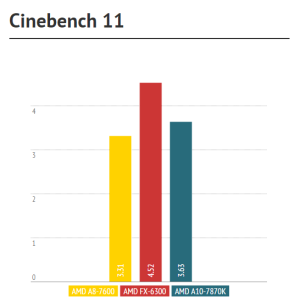
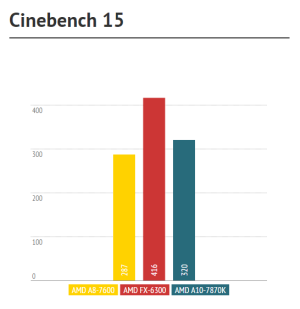

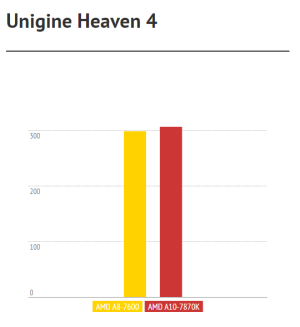
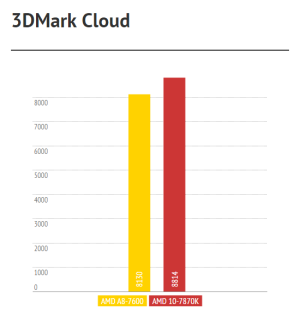








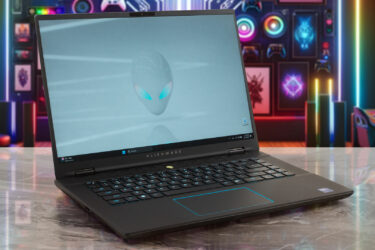
“The first APU processors on the market emerged as “Richland” and “Trinity” and they were manufactured using a 32nm process.”
This is incorrect. The first APU chips were “Llano” 32nm chips in 2011. These were the short lived FM1 platform chips.
Also the part about DirectX 12 ASYMMETRIC Rendering is misleading. The CPU is not rendering the red objects but rather the APU’s 8 GCN cores.
You are absolutely right about the first one. I’ve forgotten to mention Liano so I’ve edited that part.
As for your second note – of course, it’s the 8 GCN cores. That’s what I was referring to by the “CPU” as a whole unit. Maybe should have said “APU” in this case.
So uhm…what was the ram used? Because your FPS in games seem particularly bad. CS:GO should always be above 60 fps….feels like 1866 or lower ram was used, no?
Using 2133 is the absolute minimum…and even AMD recommends 2400+. (The price premium is negligible nowadays)
Yes, you’ve guessed it. We used 1600MHz as we weren’t able to equip the desktop with faster memory. It’s a good idea to include a table with the tech specs of the machine we’ve used.
On the 7850K the difference between 1600 and 2400 on the GPU side was between 30% to 45% depending on benchmark or game on the GPU side! And even the CPU side benefits from high quality ram with tight timings/high bandwidth as the lack of L3 cache makes it rely on the DDR3 ram a bit more. Long story short, you wasted a lot of possible potential. To give you an idea CS:Go will always be above 60 fps and GTA V on medium settings will average on 35 fps. Not sure about F1 or TR…but they’ll very likely be… Read more »
I totally agree, but we were provided with this testing kit, so we did our best given the situation. (:
If at some time you do get the opportunity to test the A10-7870K using high bandwidth SDRAM, keep in mind that since it has been reported (http://www.computerbase.de/2014-01/amd-kaveri-arbeitsspeicher/) that the A10-7850K performs significantly better using dual rank memory, the Kaveri refresh units should do also, in all likelihood. Something like one of the nicely-binned G.Skill TridentX F3-2666C11D-16GTXD kits, underclocked, with tightened timings, should fit the bill. (G.Skill uses Hynix MFR chips in those sticks, BTW.)
Excellent review Mr. Pandev! I’m particularly impressed with the framerates on GTA V. It seems like the CPU portion of this APU is beefier than I gave it credit for considering it can push 82 FPS at minimum settings – is that a typo???
hey i buy a AMD APU 7870 andddd would compatibility with nvidia 750ti?